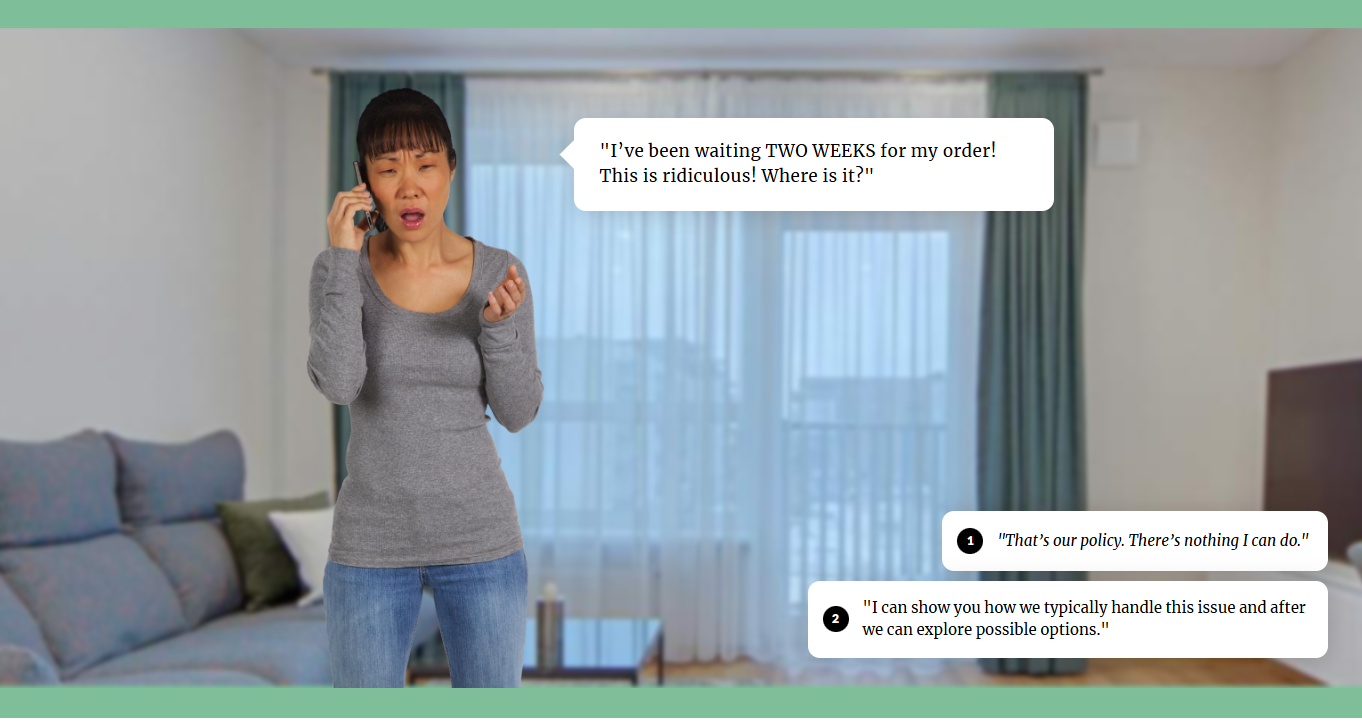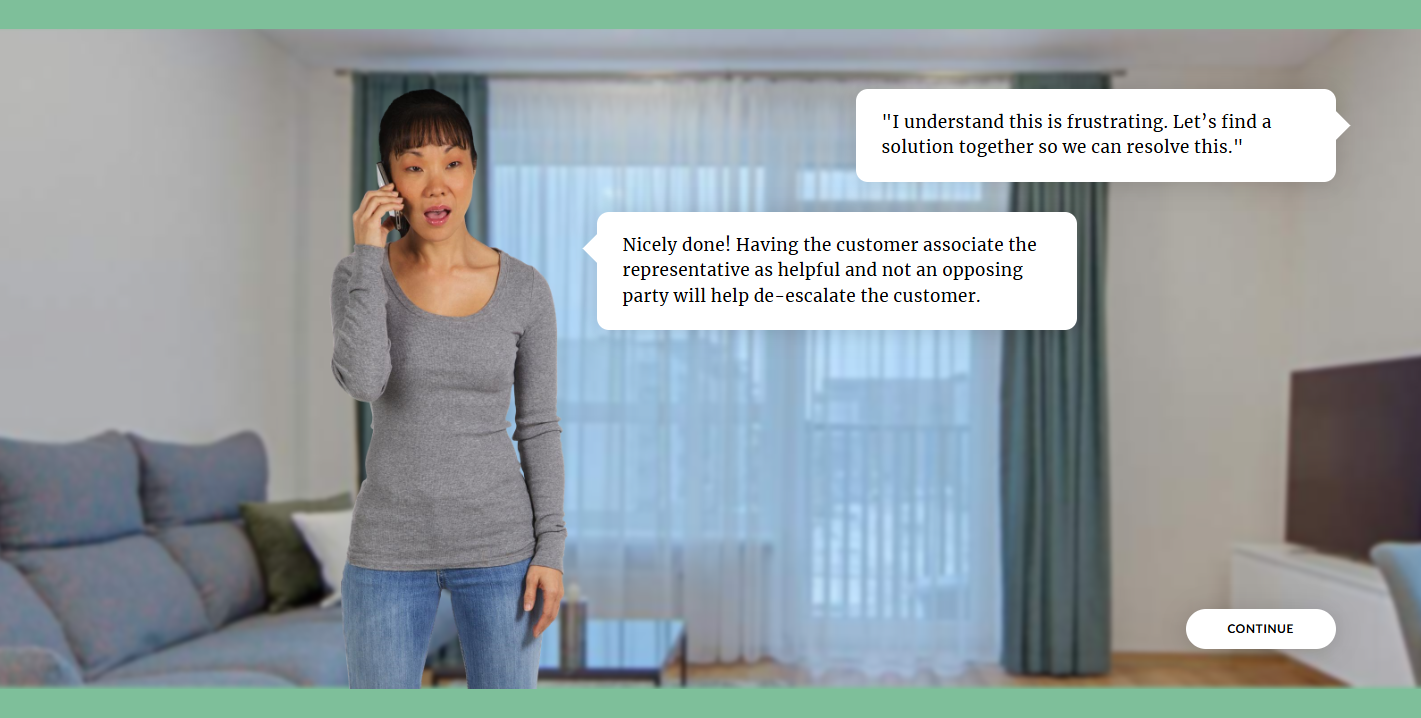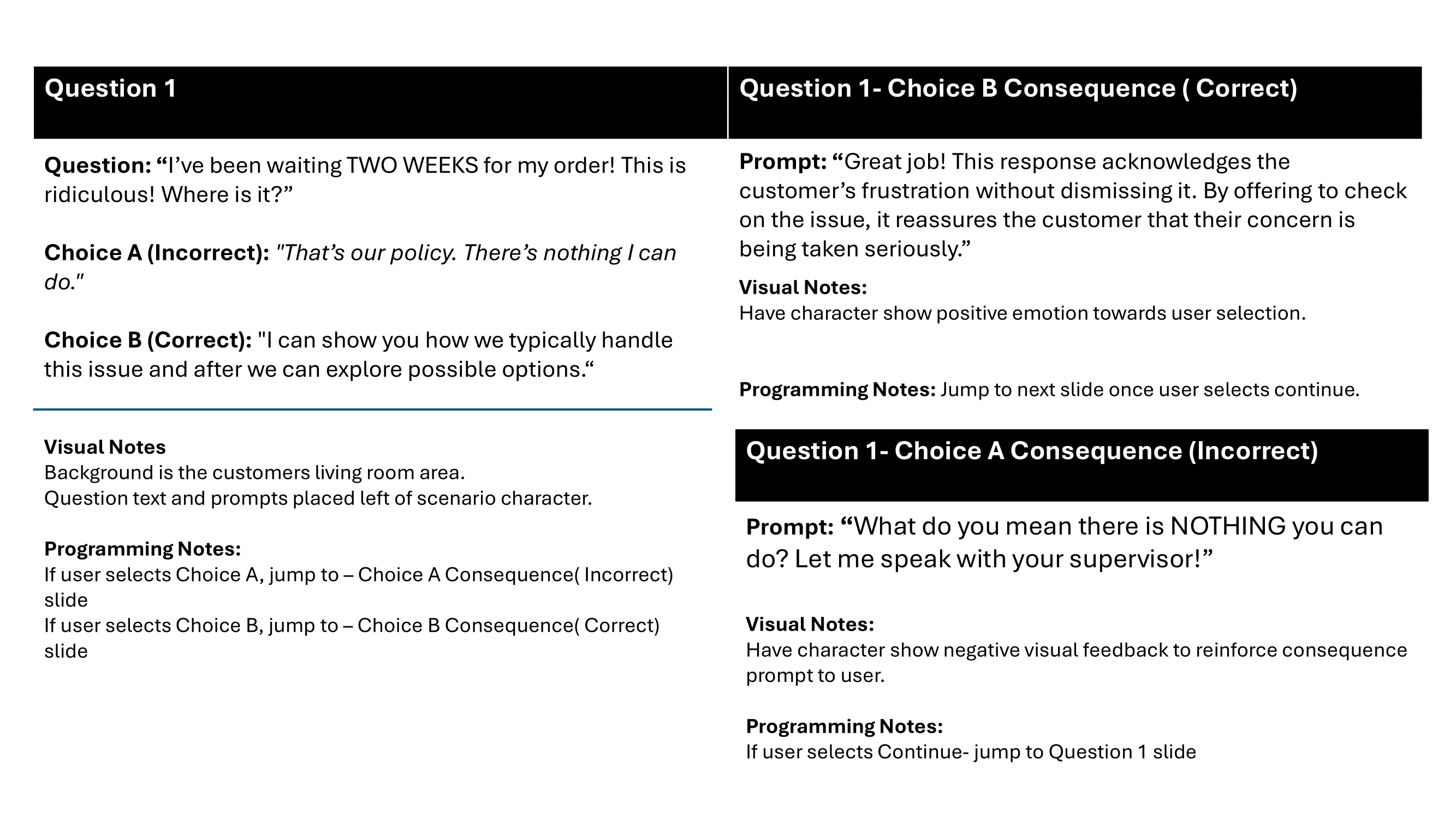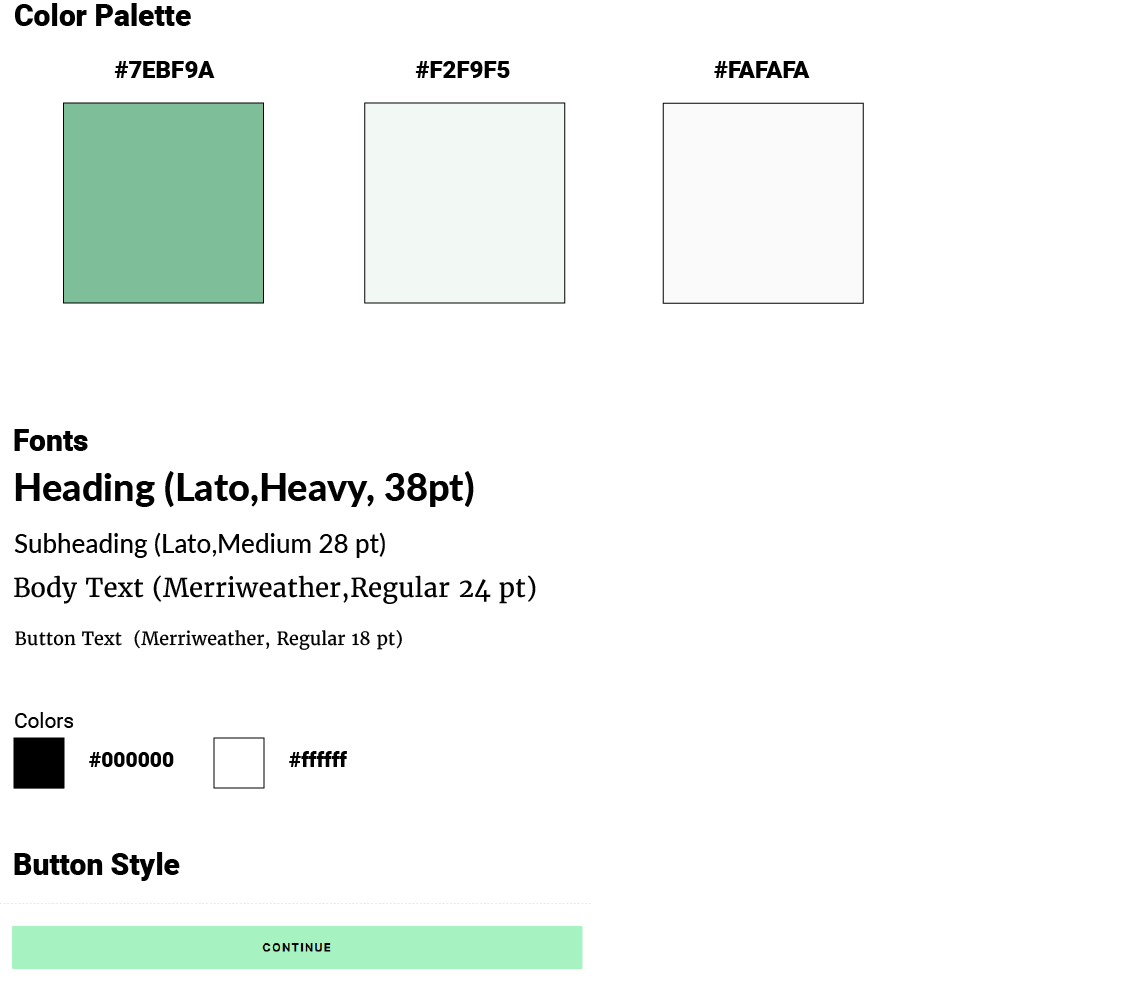Customer De-escalation Training
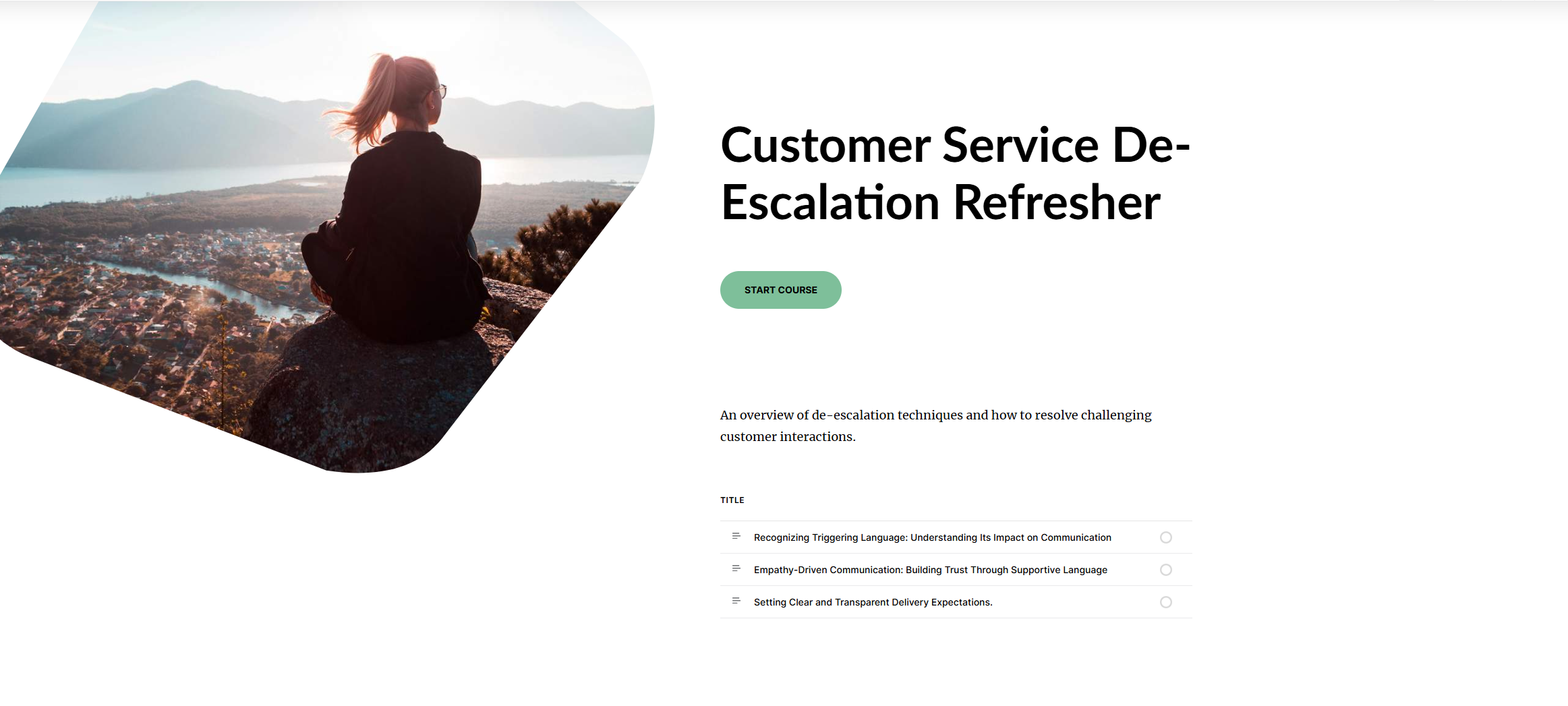
Audience
Patient Care Assistants
New Employees
Roles
Instructional Design
Needs Analysis
eLearning Development
Storyboarding
Action Mapping
Visual Design
Tools
Articulate Rise 360
Adobe Illustrator
Adobe Photoshop
MindMeister
Microsoft Suite 360
Visual Studio Code [HTML,CSS]
Problem
GreatMeds Pharmacy is a pharmacy that is
experiencing an increase in escalated call transfers.This is putting a strain on limited
resources from supervisors.
This is resulting in lower customer satisfaction metrics, and
I am assigned to address
this on-going need.
Patient Care Assistants are the first line of contact for our patients when conducting
refills . They are the first to
greet our patients and assist them with any concerns with their medication. These first
encounters are crucial to
retaining our patient experience with excellent service.
Solution
To better understand and identify a solution, I began
my analysis by looking at prior training material and create a
engaging way to include deescalation methods. With the assistance of an experienced Patient
Care
Assistant acting as a
designated SME, I was able to get insight on why these issues may be occurring. The SME gave
several recommendations to
help resolve this issue including:
- A refresher of all customer service competencies with a scenario based assessment.
- Scenario activity involving a mock escalated call.
- Create and attach resources that staff can easily follow to help mitigate need for escalation during workflow.
I decided on a scenario-based assessment including assessments was an effective
solution.
Design Process
I designed and developed this eLearning experience
from concept to deployment. The learning objective was guided by the
ADDIE model. My process included action mapping, storyboarding, designing visual mockups,
building an interactive
assessment, and fully developing the final project. Ongoing analysis, feedback, and
iterations were applied throughout
each phase of the process until I was confident in the content, design, and functionality of
the learning experience for
staff.
Action Mapping
Once the project was assigned and improvement of
customer service practices were requested , it was time to define and analyze
each aspect of the customer experience through action mapping.
I developed the action map using MindMeister. I began
by first establish a measurable KPI
and learning objective for the
stakeholder. The action map divides each competency and sub-competency that needs to be
trained. This includes the
format needed to complete each task and alignment with the end goal of the process. The
future decrease on
escalation transfers with
agents became the priority throughout the entire eLearning experience.
I began by gathering information from the assigned SME of the Patient Care department.
I prepared a document to
gather information on each workflow processes and scheduled a work shadowing meeting to view
these processes live. Once
all tasks, responsibilities and expectations were listed I began to inquire about possible
negative interactions.
Text Based Storyboard
The action map identified three high-priority
categories essential for reducing a need for supervisor customer interactions.
These address the foundational information for the mock scenarios in my eLearning solution.
The storyboard showcases the project's text for stakeholder review. Each decision presents
two
answer choices - one correct
and a consequence - leading to distinct outcomes for the learner.
Visual Design
After the completion of the storyboard, the focus
shifted to visual design.
The use of muted tones that were relaxing to the eye was essential for the color scheme. This
formed the basis for my
style guide.
I selected Lato, a
minimalist sans-serif that is ideal for headers and subtitles. Merriweather is a highly legible
serif typeface. This was
chosen for the body text, to help increase accessibility and visibility.
I then designed high-fidelity visual mockups for my
slides using Adobe Illustrator. Articulate assets were selected, and generative AI images were
edited
with Adobe Photoshop. I opted for modern imagery with illustations to give contrast and help
immerse
learners.
Full Development
Using feedback on the prototype, I was able to move
on to full development. My most important goal was to make this
project as accessible and engaging as possible.
Results and Takeaways
My goal was to create a clear and easy way to adopt
de-escalation methods for learners. I wanted to be challenged as a
designer and a developer yet still create an effective and engaging solution that reduced
escalation transfers.
I learned a lot throughout this process and gained a few takeaways, including these 3 P’s:
• Patience: Patience is fundamental to navigating the
instructional design process.
Every phase, from conceptualization
through delivery, required a considerable amount of time, attention, and patience. I
encountered obstacles and made
errors along the way, but they were, and always will be, inevitable obstacles when
creating impactful learning
experiences.
• Prototyping: Early prototyping is key to effective eLearning
design. Throughout
the
project, it became clear that
creating a prototype early in the design phase and revision of potential issues was
crucial. Users were able to detect
visual design flaws, functionality issues, or content gaps, and I was able to edit
them
in a timely manner.
• Power of community: Leveraging online eLearning resources
accelerates
problem-solving
and innovation. My community of
mentors was a rich source of knowledge, inspiration, and support. I
heard
different perspectives, which
created new thought processes. Collaborating with my team led to shared
resources and
best practices, and ultimately to
a more effective eLearning solution.

